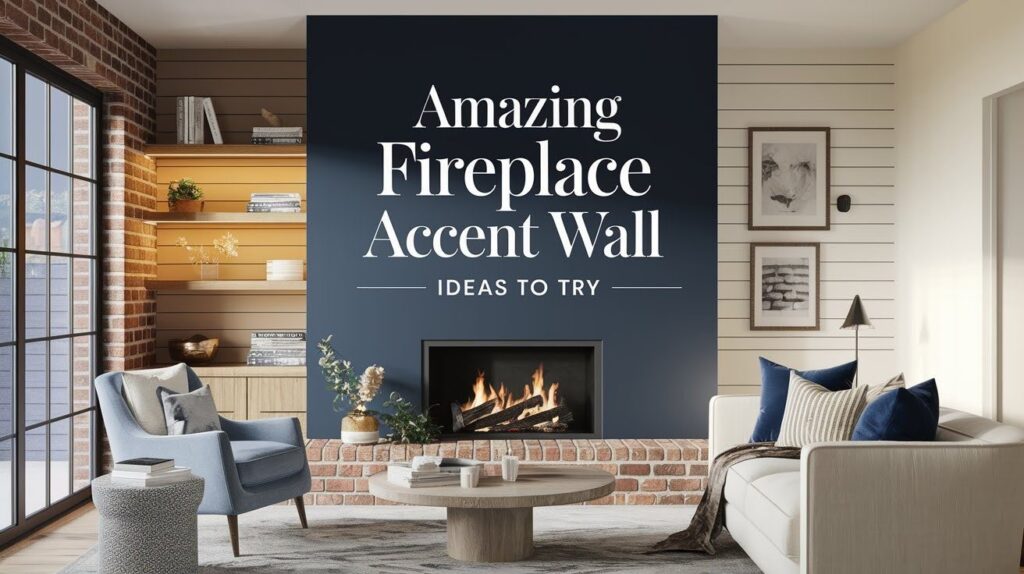A fireplace naturally draws the eye and becomes the centerpiece of any room. When you want to make this architectural feature even more striking, paint offers an affordable yet impactful solution that can completely change your space’s atmosphere.
The right color choice can complement your existing decor or create a bold statement that defines your entire room’s character.
This comprehensive collection presents fireplace painting ideas that cater to every design preference and style.
From dramatic accent colors that command attention to subtle neutral tones that provide timeless appeal, you’ll find options for modern minimalist spaces, warm cozy retreats, rustic country homes, and vibrant playful interiors.
Each approach offers a unique way to highlight your fireplace while reflecting your personal taste and lifestyle.
List of 23 creative ways to give your fireplace wall a fresh new look with paint
1. Jet Black Style
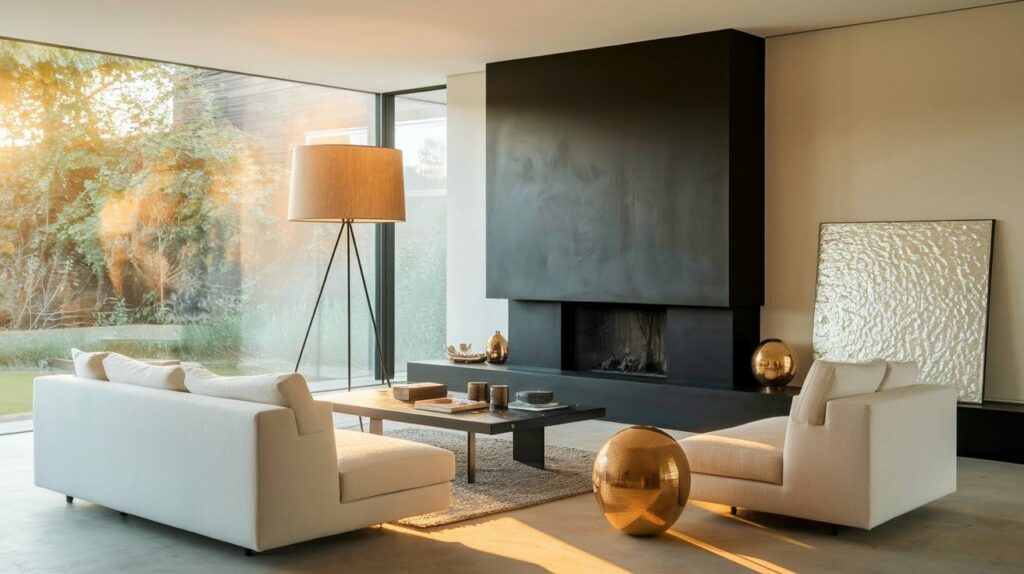
Paint your entire fireplace wall in rich matte black for instant drama and sophistication. This bold choice makes your fireplace the room’s focal point and works well with white furniture and metallic accents.
The deep color creates stunning contrast that makes artwork and decorative objects pop against the dark background. Consider using flat or eggshell finish to minimize reflections and maintain the sophisticated matte appearance.
2. Classic Navy Blue
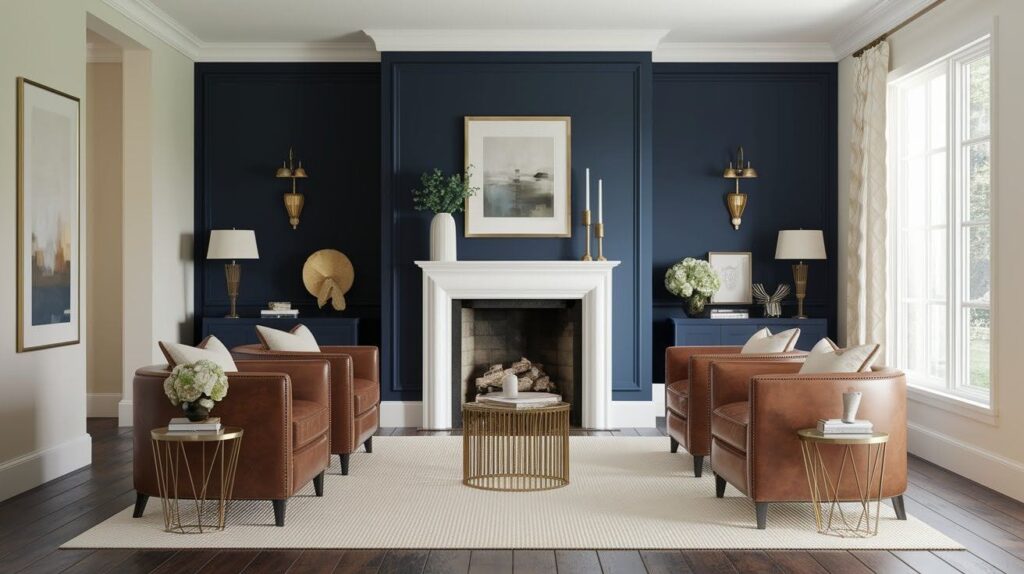
Deep navy brings timeless appeal that pairs beautifully with brass fixtures and warm wood tones. This versatile color works in both traditional and contemporary spaces. Navy creates depth and richness without feeling as heavy as black, making it perfect for cozy family rooms.
The color serves as an excellent backdrop for seasonal decorations and complements both warm and cool accent colors.
3. Soft Charcoal Gray
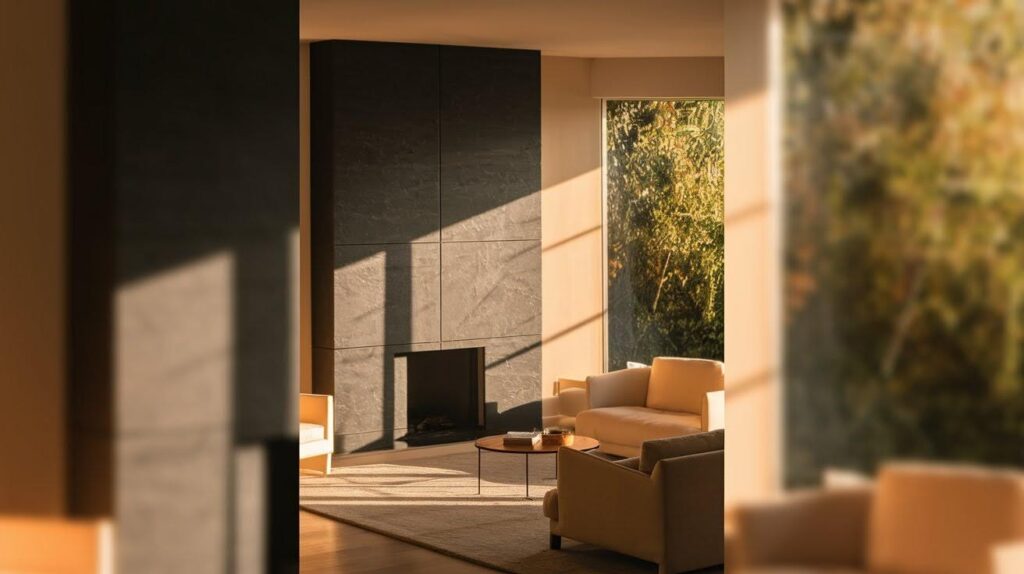
Choose charcoal for subtle depth without overwhelming your space. This neutral option provides visual interest while maintaining balance and works with any decor style.
Charcoal gray is ideal for those who want something more sophisticated than standard gray but aren’t ready for bold colors. The versatile shade allows you to easily change accent colors and seasonal decorations without repainting.
4. Creamy Warm White
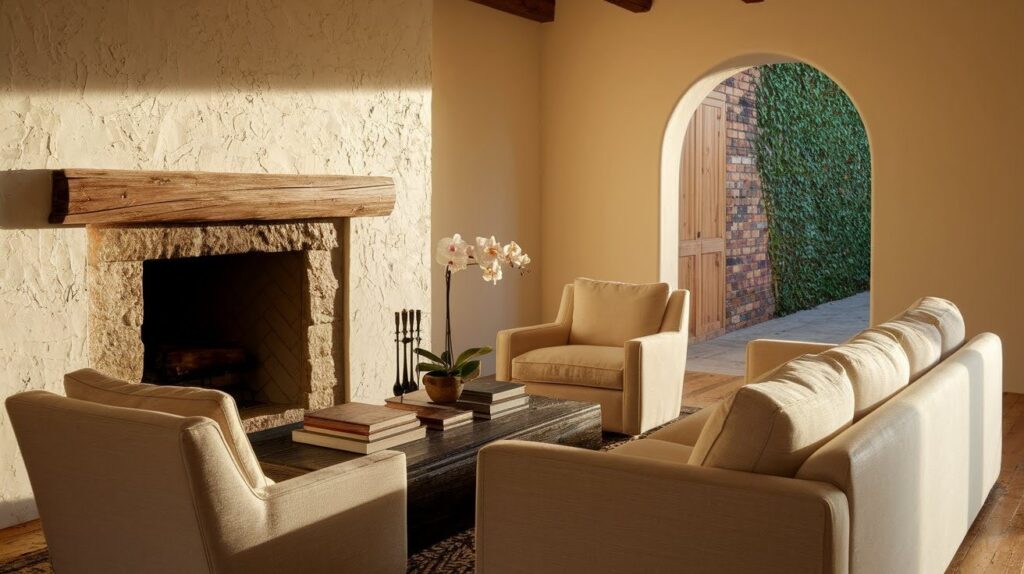
Off-white or ivory paint creates a gentle, inviting feel. These warm undertones soften harsh lines and make your fireplace area more welcoming than stark white. Choose shades with subtle yellow or beige undertones to complement your room’s natural lighting throughout the day.
This approach works exceptionally well with natural materials like wood mantels and stone surrounds.
5. Modern Greige
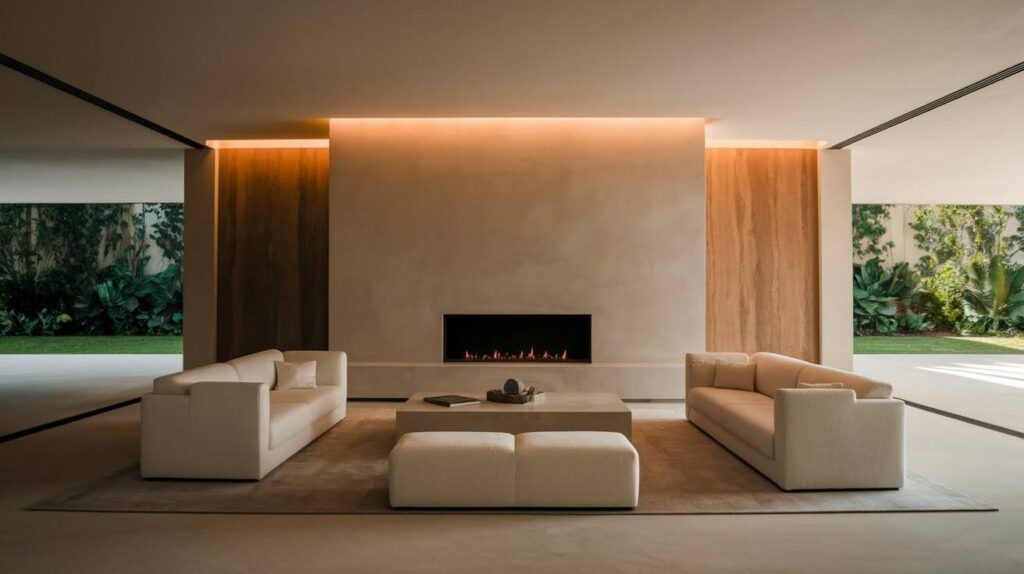
Blend gray and beige for the perfect warm-neutral combination. Greige offers modern sophistication with traditional warmth and complements both cool and warm palettes.
This trending color works particularly well in open floor plans where the fireplace wall needs to coordinate with multiple spaces. The balanced tone provides enough interest to stand alone while serving as a calm backdrop for colorful furnishings.
6. Forest Green Calm

Deep green tones bring nature indoors and create a serene atmosphere. This earthy choice pairs well with natural materials and brass accents. Forest green works exceptionally well in rooms with plenty of natural light and creates a cozy library-like feel.
The rich color complements leather furniture, wooden elements, and creates a sophisticated backdrop for books and artwork.
7. Dusty Rose Warmth
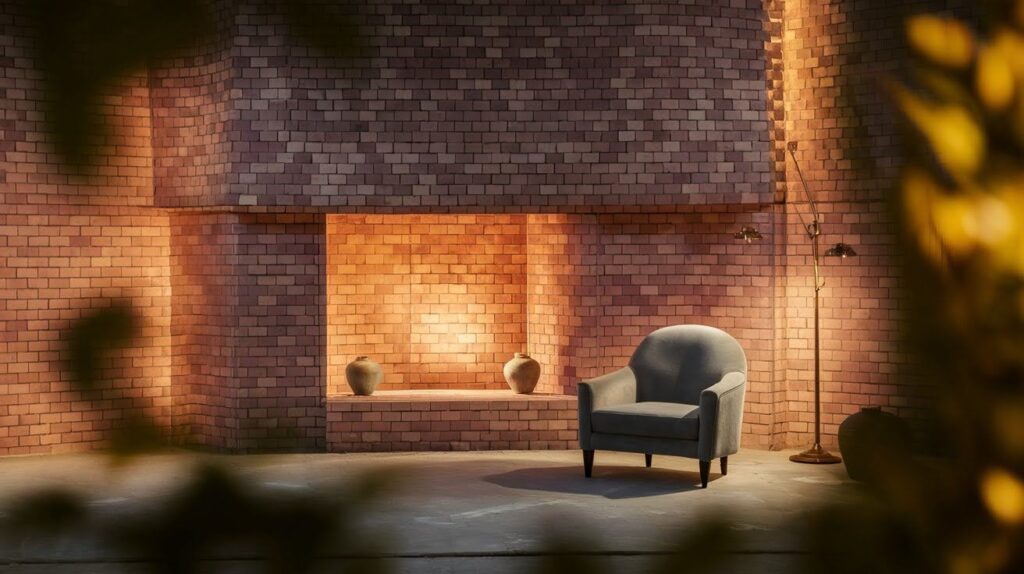
Gentle pink undertones add romance without being overpowering. This soft color creates an intimate atmosphere and works in both traditional and modern settings. Dusty rose pairs beautifully with gray, cream, and even deep navy for sophisticated color schemes.
The muted tone adds warmth and femininity while remaining subtle enough for shared family spaces.
8. Terracotta Accent Wall
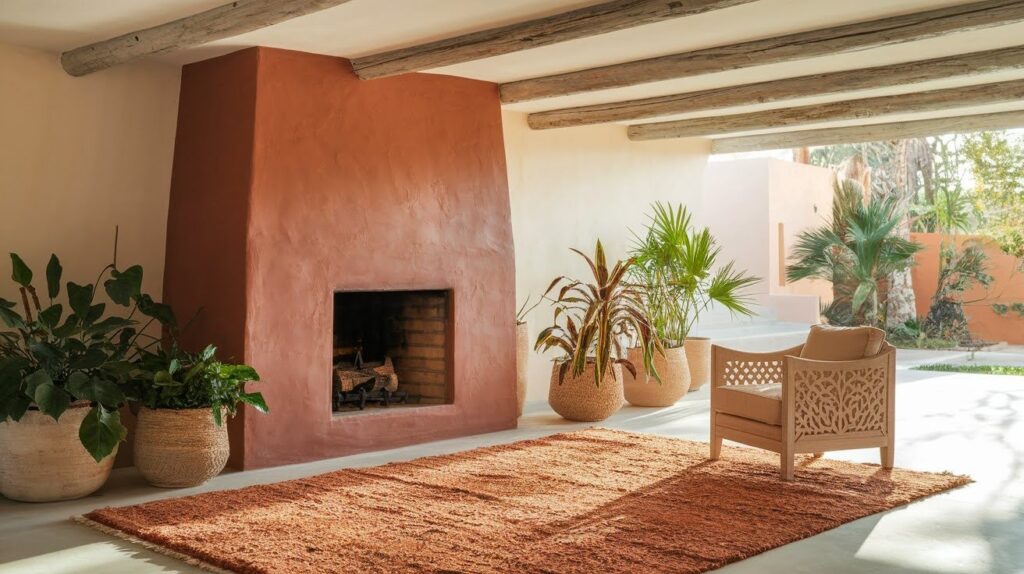
Sun-baked orange and clay tones bring Mediterranean warmth. These earthy colors work beautifully with natural stone and wood elements. Terracotta creates a cozy, organic feel that’s perfect for southwestern or bohemian design styles.
The warm undertones make spaces feel inviting and pair well with plants, woven textures, and natural materials.
9. Muted Sage Green
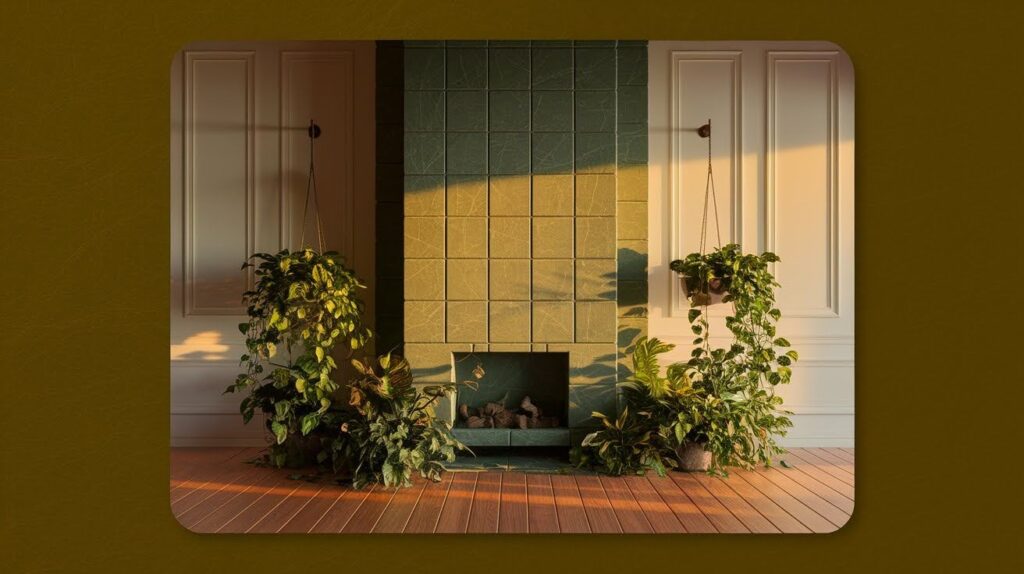
This trendy botanical color brings peaceful, spa-like vibes. Sage green complements natural materials and pairs well with white and warm wood tones. The calming shade works perfectly for creating relaxing spaces where you want to unwind after long days.
Sage green also coordinates beautifully with houseplants, creating an indoor garden atmosphere that feels fresh and organic.
10. Slate Blue Statement
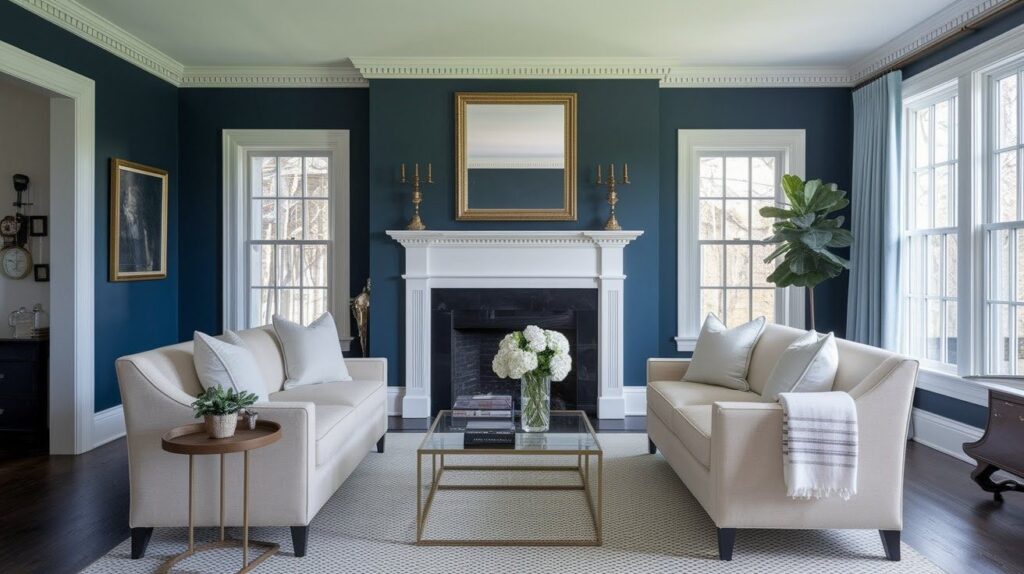
Cool and calming with refined sophistication, slate blue creates a serene backdrop that’s more interesting than gray but not as bold as navy. This versatile color works well in both bedrooms with fireplaces and formal living areas.
Slate blue pairs beautifully with white trim and warm metallic accents like brass or copper. The sophisticated hue creates an excellent foundation for both traditional and contemporary furnishing styles.
11. Taupe and Mushroom Tones
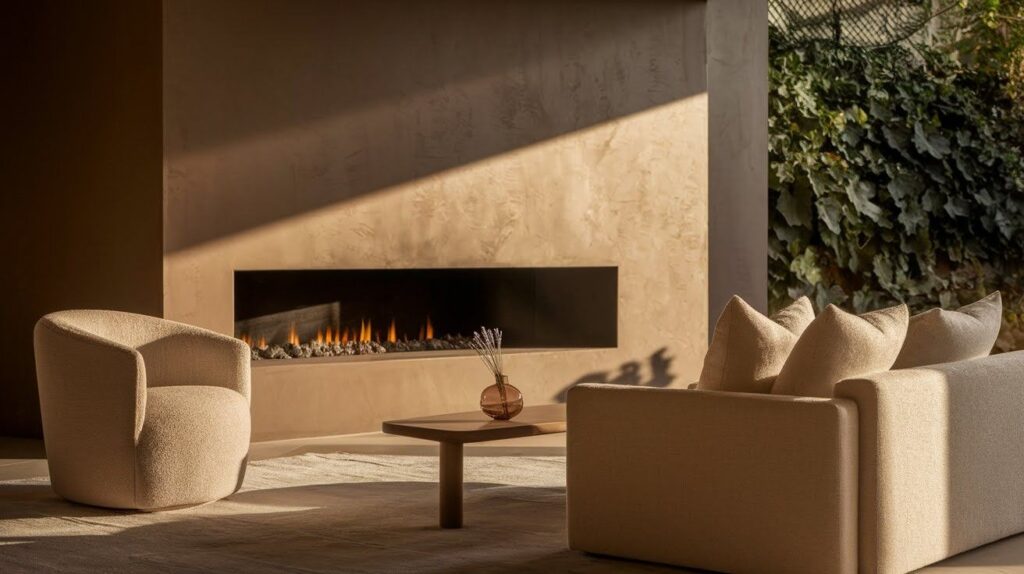
Soft brown-gray hues add gentle earthiness while maintaining neutral versatility. These understated colors provide warmth without competing with other elements. Taupe works beautifully as a sophisticated backdrop that allows furniture and artwork to take center stage.
The neutral tone coordinates with virtually any color scheme, making it perfect for those who like to change decor seasonally.
12. All-White Monochrome Look
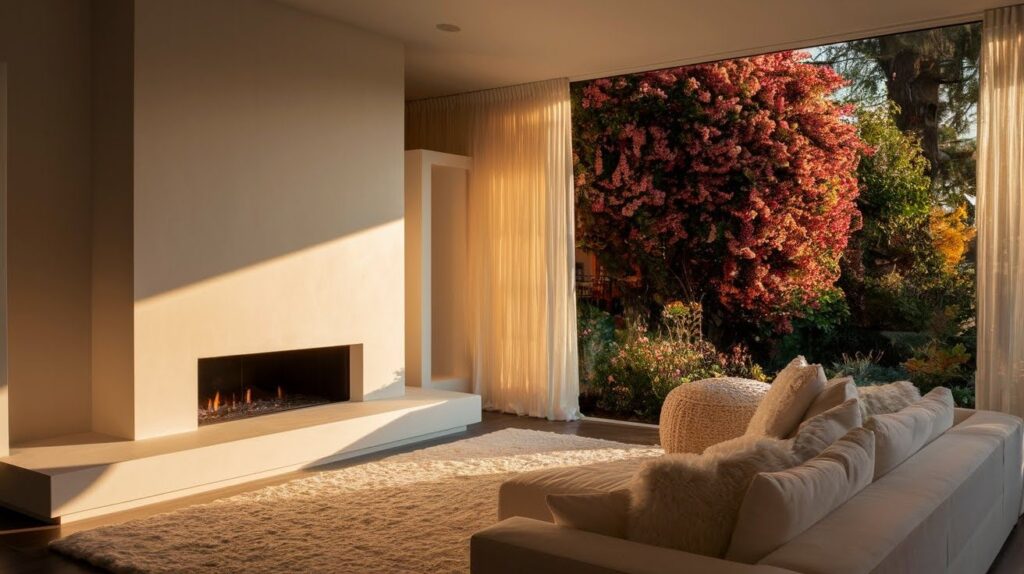
Paint wall, fireplace, and trim in matching white for clean cohesion. This approach makes spaces feel larger and works well in smaller rooms. The monochromatic treatment creates seamless flow and allows texture and materials to become the focal points.
Add interest through varying paint sheens – flat for walls, semi-gloss for trim , while maintaining the unified color palette.
13. All-Black Monochrome Wall
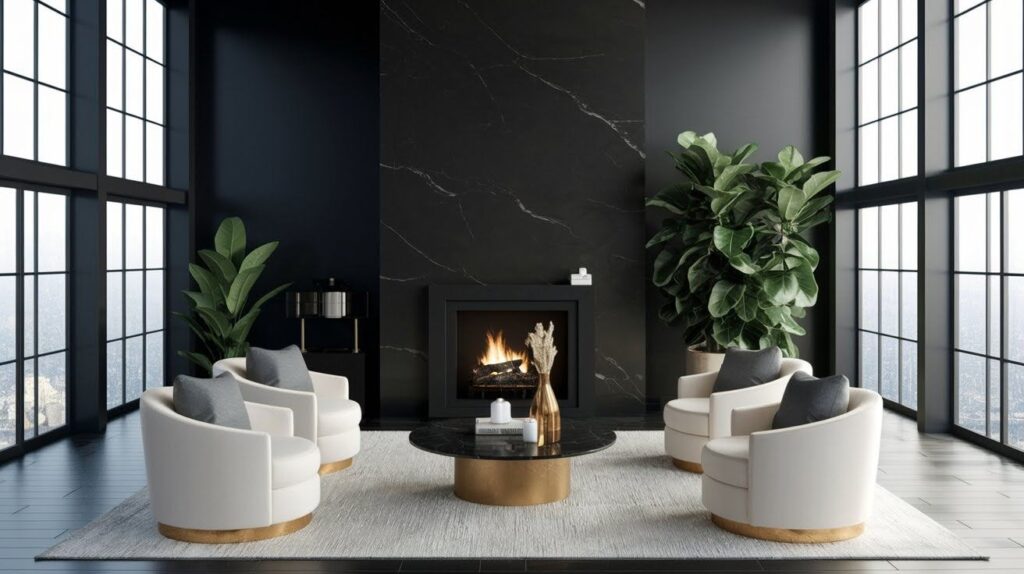
Go completely black for striking contrast and modern appeal. This dramatic choice works best in rooms with adequate natural light and higher ceilings. The bold treatment makes colorful furniture and artwork appear more vibrant against the dark backdrop.
Balance the intensity with plenty of white or light-colored furnishings and metallic accents to prevent the space from feeling too heavy.
14. Two-Tone Wall Paint
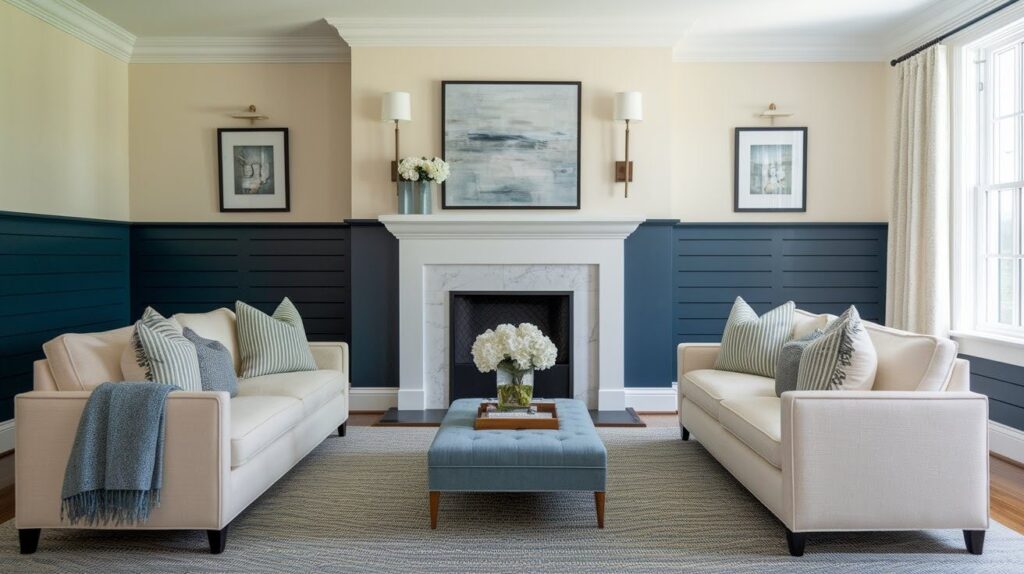
Split your wall horizontally with different colors on top and bottom. This technique adds visual interest and can make ceilings appear higher. Use chair rail molding or painter’s tape to create clean, professional-looking lines between colors.
Popular combinations include navy below with cream above, or sage green below with white above for balanced contrast.
15. Board and Batten with Color
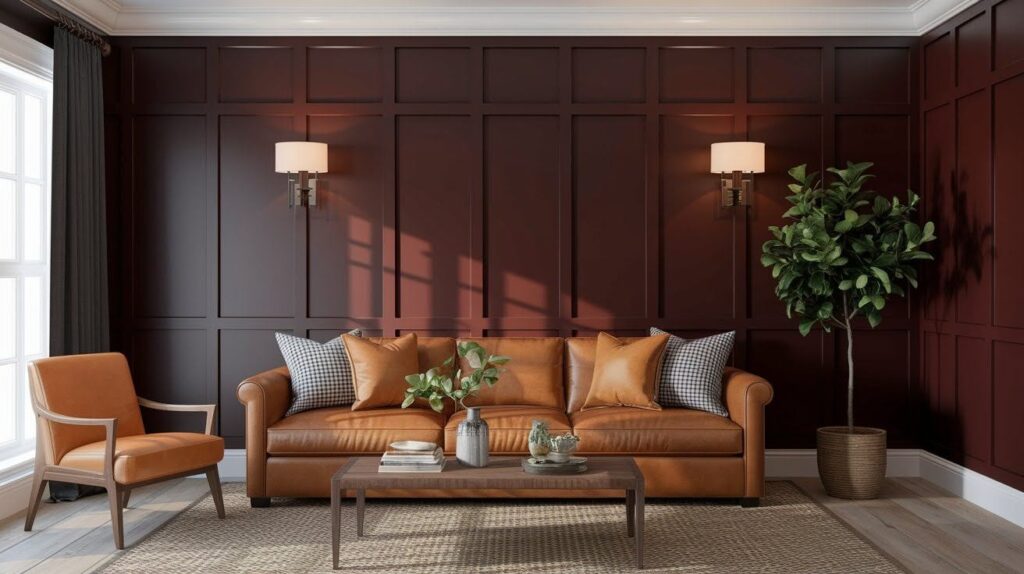
Install board-and-batten paneling and paint it in rich tones. This adds texture and classic charm while creating architectural detail. The vertical lines create height while the paneling adds sophisticated dimension to flat walls.
Paint the spaces between battens in matching or slightly contrasting colors for subtle variation and added visual interest.
16. Vertical Shiplap in Sage or Blue
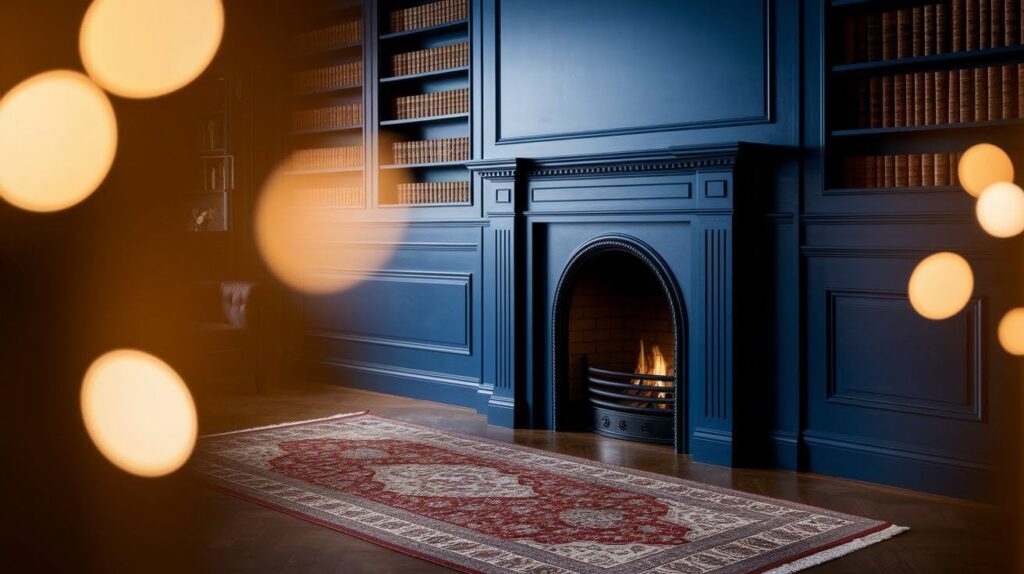
Wood paneling painted in muted colors creates visual height and farmhouse character. Vertical lines make rooms feel taller. The texture adds warmth and interest while the vertical orientation draws the eye upward, creating the illusion of higher ceilings.
Choose eggshell or satin finish for easy maintenance around the fireplace area while maintaining the desired look.
17. Limewashed Brick Finish
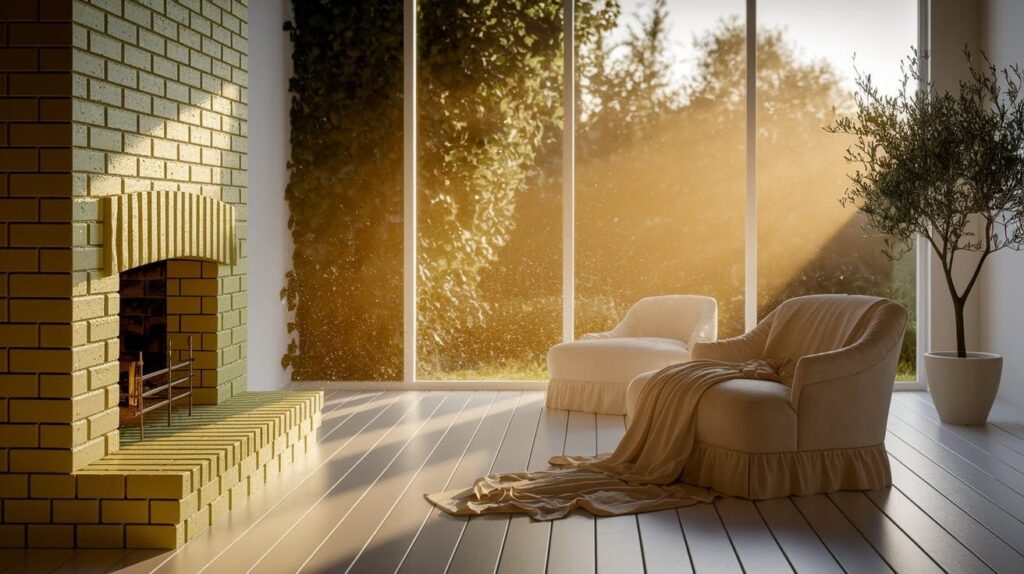
Apply limewash paint over existing brick for soft, aged texture. This technique maintains brick character while adding subtle color. Limewash allows the natural brick texture to show through while providing a fresh, updated appearance.
The technique works particularly well with white, cream, or soft gray tones for Scandinavian or Mediterranean aesthetics.
18. Faux Concrete Paint
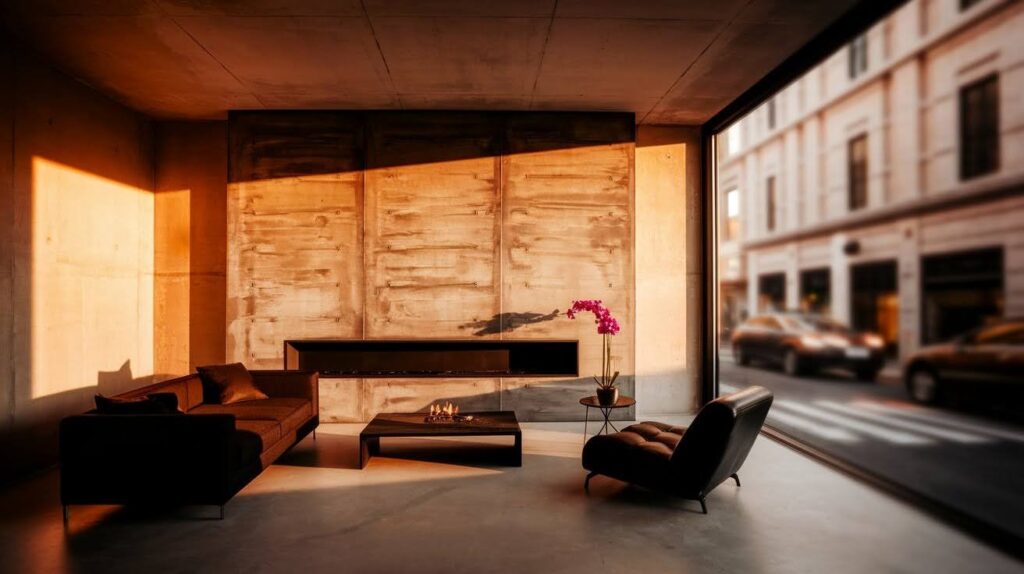
Mimic industrial textures with flat gray paint and special techniques. This modern approach works well in contemporary and minimalist spaces. Use sponging or specialized concrete-look paint products to achieve realistic industrial texture and visual interest.
The technique pairs perfectly with sleek furniture and metallic accents for a complete modern urban aesthetic.
19. Chalkboard Fireplace Wall
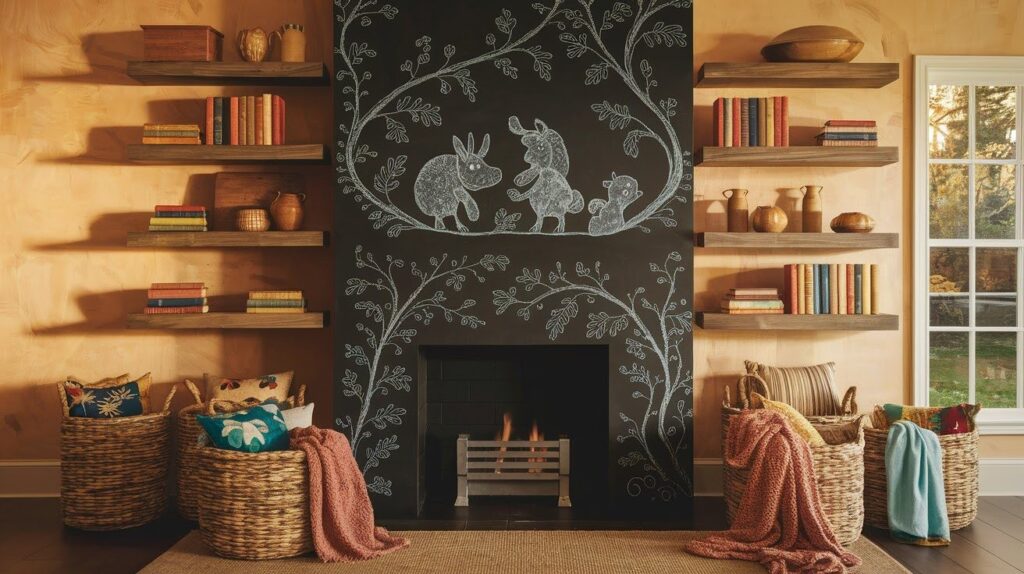
Paint with black chalkboard paint for functional art space. Family members can write messages and create seasonal decorations. Provide designated storage for chalk and erasers to keep the area organized and functional.
Frame the chalkboard area with contrasting trim for a finished, intentional look that feels integrated into your decor.
20. Color-Blocked Fireplace Design
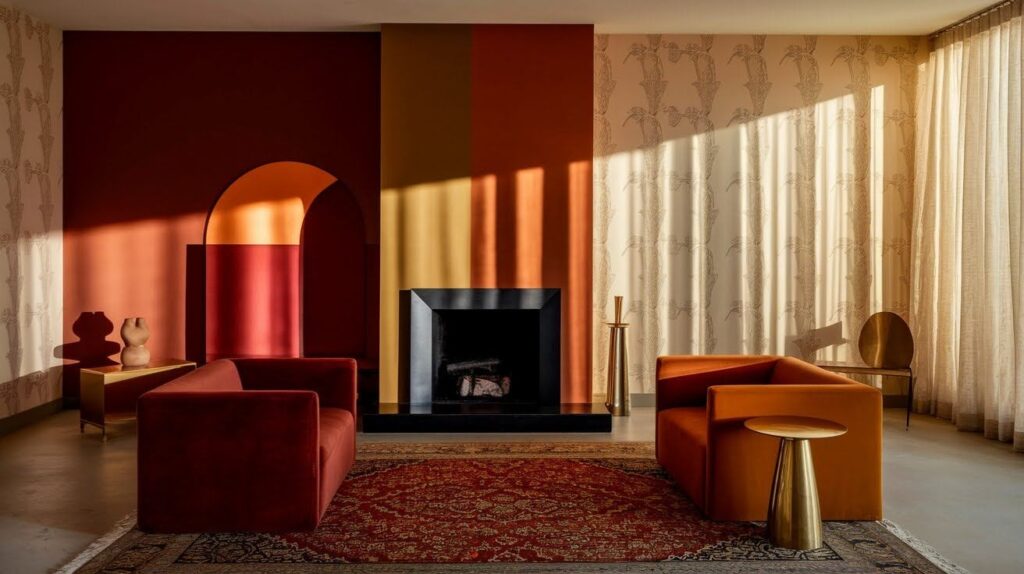
Paint bold geometric shapes around your fireplace for contemporary flair. Use contrasting colors to create eye-catching modern patterns. Plan your design carefully and use high-quality painter’s tape for clean, professional lines.
Consider the scale of your shapes relative to room size – larger rooms can handle bolder designs while smaller spaces benefit from subtler geometric elements.
21. Ombre Wall Technique
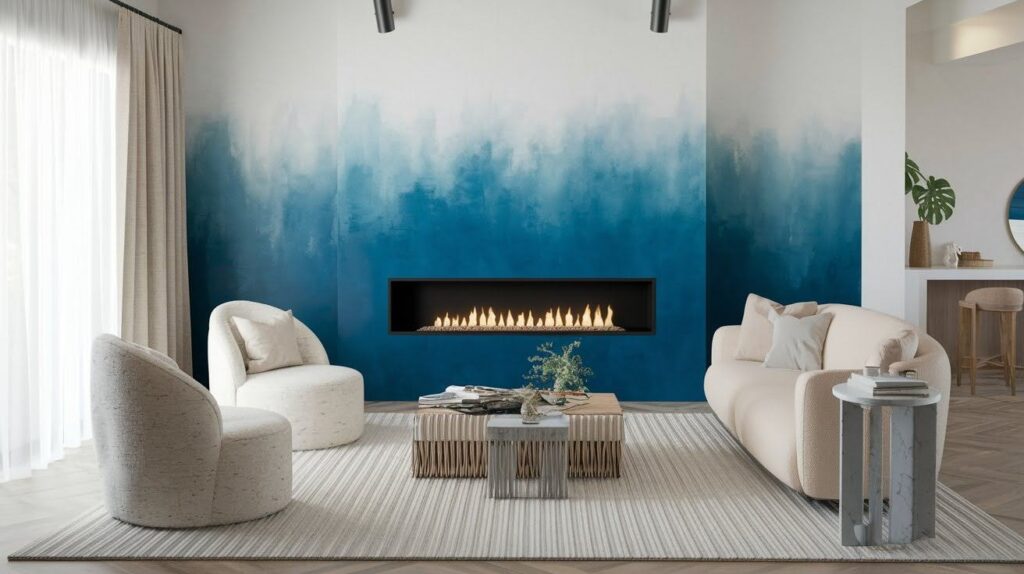
Create gradient effects by blending paint from dark to light. This artistic approach adds movement and creates a unique custom look.
Work in sections while paint is still wet to achieve smooth color transitions and professional results. The technique works beautifully with both neutral color families and bold, dramatic color combinations for personalized artistic impact.
22. High-Gloss Jewel Tones
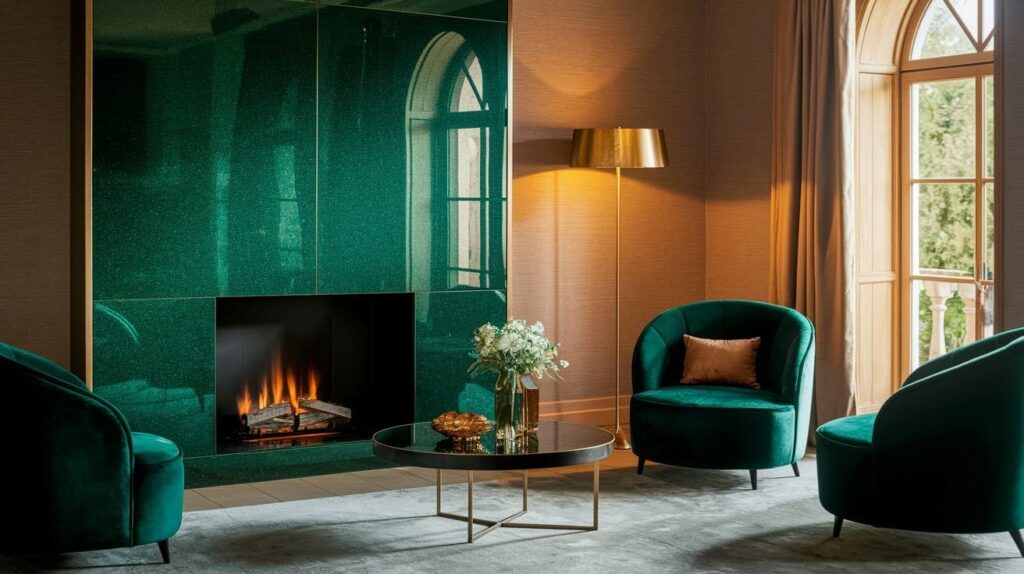
Apply glossy paint in rich emerald, sapphire, or ruby for luxury appeal. The reflective finish catches light and creates depth. High-gloss paint requires careful surface preparation but delivers stunning, jewel-like results that feel sophisticated and glamorous.
Balance the intensity with neutral furnishings and metallic accents to prevent the bold color from overwhelming the space.
23. Painted Arch Over Fireplace
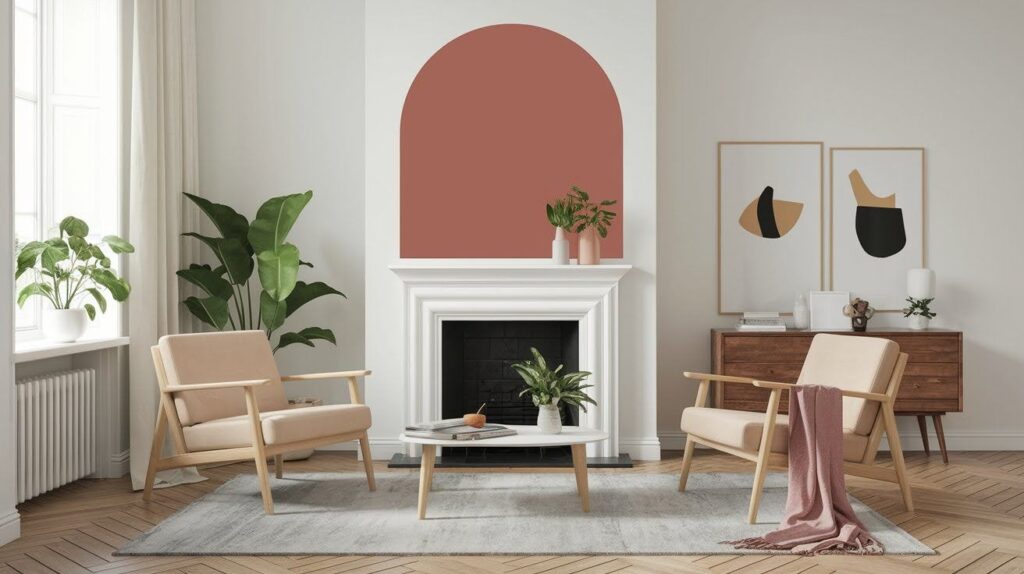
Use curved paint lines to create an arch shape above your fireplace. This adds architectural interest and makes standard fireplaces feel grand. Use painter’s tape or stencils to achieve perfect curves and professional-looking results.
Paint the arch area in contrasting colors – dark arches on light walls create dramatic definition while maintaining architectural elegance.
How to Choose the Right Fireplace Wall Paint Color
Selecting the perfect paint color for your fireplace wall requires thoughtful consideration of several key factors.
Assess Your Room’s Natural Light
The amount of natural light significantly impacts how colors appear. Darker colors absorb light, making rooms feel cozy but potentially cramped in smaller spaces. Lighter colors reflect light, brightening rooms and creating a more spacious feel.
Consider how your chosen color will look throughout the day, from morning sunlight to evening lamplight.
Evaluate Your Existing Elements
Examine your current furniture, flooring, and architectural materials before deciding. Warm wood floors or mantels require different color considerations than cool stone surfaces.
Your furniture colors and permanent fixtures like built-ins and window treatments should influence your paint selection to create a cohesive overall look.
Decide on Contrast vs.Cohesion
Choose whether you want your fireplace wall to create dramatic contrast or blend harmoniously with your space. High contrast approaches, like black walls in white rooms, create bold focal points that demand attention.
Cohesive tone-on-tone schemes provide serene, unified feels where the fireplace integrates seamlessly with existing decor.
Test Before You Commit
Never choose colors based solely on small chips or online images. Purchase sample sizes and paint large swatches directly on your wall.
Observe these samples at different times and under various lighting conditions, including natural daylight and evening lamps. Live with samples for several days to ensure you’ll love your final choice.
Conclusion
With 23 different paint ideas to choose from, there’s truly an option here for every home style and personal mood. Painting your fireplace wall offers one of the quickest and most impactful ways to refresh your entire room without major renovations or expensive updates.
Whether you’re drawn to bold, dramatic colors that make strong statements or prefer soft neutrals that create calm, peaceful atmospheres, these suggestions provide the foundation for creating your ideal space.
The beauty of paint lies in its versatility and affordability, allowing you to experiment with different looks until you find what feels right.
Use these ideas as your starting point, but don’t hesitate to adapt them to match your unique vision and make your fireplace wall truly reflect your personal style and home’s character.
Frequently Asked Questions
What paint finish works best for fireplace accent walls?
Eggshell or satin finishes are ideal for fireplace walls as they provide durability and easy cleaning while offering subtle sheen. Avoid high-gloss finishes near actual fire sources, but they work well for electric or gas fireplaces where heat isn’t a concern.
Can I paint directly over brick around my fireplace?
Yes, you can paint brick, but proper preparation is essential for long-lasting results. Clean the brick thoroughly, apply a high-quality primer designed for masonry, then use latex paint for best adhesion and breathability.
How do I choose between bold colors and neutral tones for my fireplace wall?
Consider your room’s natural light, existing furniture, and how often you change decor styles. Bold colors create dramatic focal points but may feel overwhelming in smaller spaces, while neutrals offer versatility and timeless appeal.
Should I paint the entire wall or just the area around the fireplace?
Painting the entire wall from floor to ceiling creates a cohesive, professional look that makes the fireplace feel integrated. Painting only around the fireplace can look unfinished and may make the space appear chopped up.
How do I ensure my fireplace paint color coordinates with the rest of my home?
Test paint samples on your wall and view them at different times of day alongside your existing furniture and decor. Consider the color flow from adjacent rooms, especially in open floor plans where spaces connect visually.

